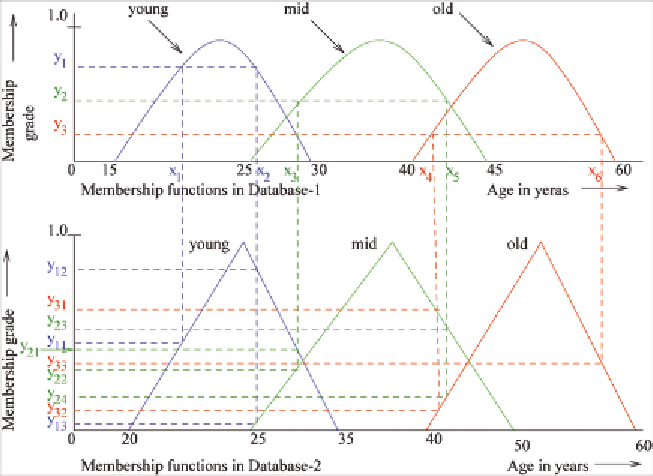Database Reference
In-Depth Information
global database attributes that cannot be found in all export databases. In that case, we assume
Null
values for the missing attributes in the export instances.
At first glance, one may want to treat the additional source attribute like just another normal attri-
bute. While this may be correct at the data storage level, we advocate that the source attribute deserves
special treatment at both the data modeling and the query processing perspectives. The source attribute,
unlike other normal attributes, must be present in every FTS relation and has a special meaning which
not only relates the instances to the local fuzzy databases they come from, but also identify the context
of data instances. Furthermore, it should be manipulated differently from the other normal attributes in
the query processing. For the FTS relational model, the values of source attributes are used purely for
implementation purpose. They do not provide any semantics regarding local fuzzy relational databases.
In order to maintain and provide source (context) semantics in a fuzzy relational multidatabase, we can
establish a source table with at least two attributes. The first attribute stores the local fuzzy relational
database identifiers, whereas the other attributes store information about the local fuzzy relational da-
tabases. Information could be the application domains, the names of geographical locations, the types
of database management systems, persons in charge (e.g., DBA), and even the assessment of the data
quality's level of each local fuzzy relational database. This source table is employed to retain the context
semantics which can be inferred by users to interpret global fuzzy queries' results of fuzzy relational
multidatabase with level-0 instance integration, or used by other data analysis tools. In addition, this
table contains useful information for level-1 instance integration. For example, the context semantics
of our example can be stored in the source table as given in Table 3.
Being an extension to the traditional fuzzy relational data model, FTS relational data model can
represent relations which do not require source information by assigning
∧
values to the source attributes.
The standard fuzzy relational operations can still operate on the FTS relations by ignoring the source
Figure 1. Membership functions and mappings for databases in Table 1

